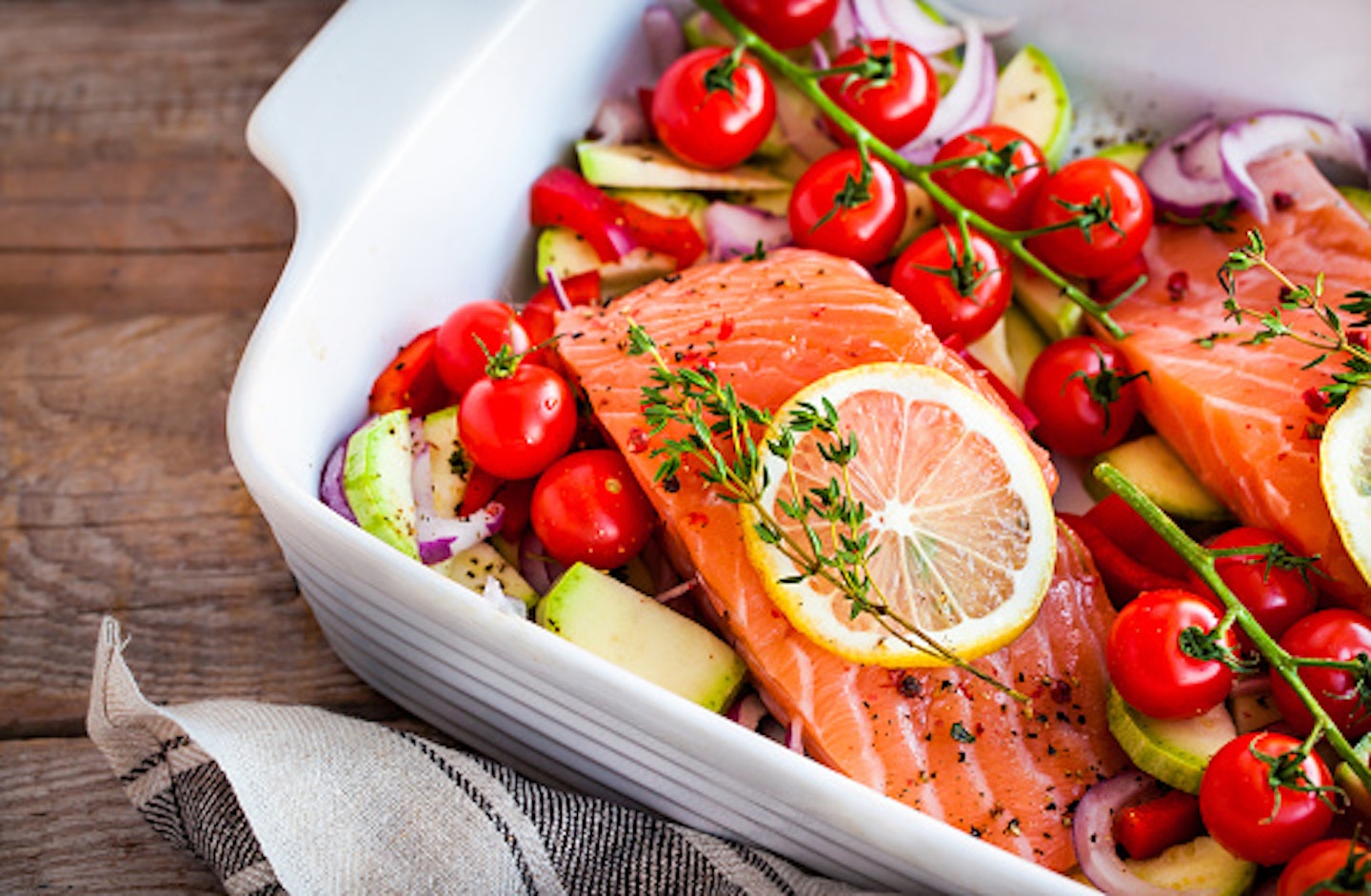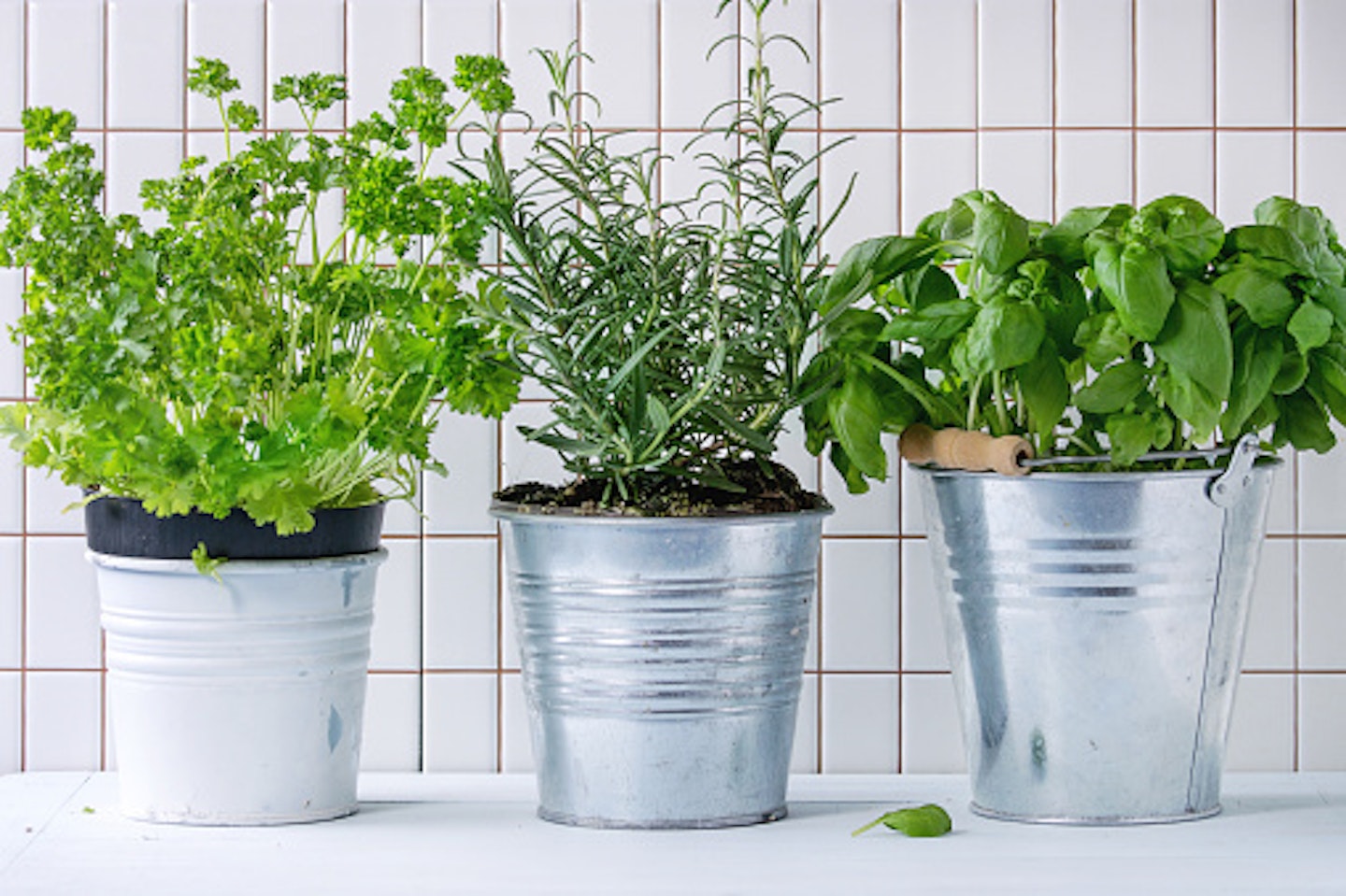Find yourself grabbing a ready meal after a busy day too often? We’ve all been there. But honestly, homemade healthy meals can be easy, quick and satisfying. Plus, eating healthy food is much kinder to your body and your bank balance in the long run.
Luckily, we’re here to help. This is our whistlestop guide to planning healthy food for that all-important last meal of the day - because it really is all in the planning.
A healthy dinner is all about balance. You’ll be pleased to know it's a cinch to accomplish with a bog-standard round plate. Simply aim to fill a quarter of the circle with protein, a quarter with carbohydrates and the remaining half with fruit and veg. Read on for a breakdown of the what and the why when planning healthy food for dinner:
Proteins

Protein is made up of amino acids – our bodies can't create them, so protein needs to be a key part of our diet. Proteins are responsible for the growth and repair of body tissue, including muscle, as well as being a source of energy.
Fish and lean meats like chicken or turkey are good protein sources. Choose healthier cooking methods such as poaching, grilling or steaming where possible. Healthy chicken dinner ideas include chicken skewers; chicken curry made with spices and tomatoes instead of cream or coconut milk; a chicken stir-fry with lots of veg; or salad with avocado and grilled chicken breast. To keep things simple, roast a chicken on a Sunday then use the leftover meat throughout the week in salads, soups, buddha bowls etc. Cooked chicken keeps for up to four days in the fridge.
Meat-free protein sources include beans and pulses. Canned lentils, chickpeas and beans are all great store-cupboard standbys. Bulk out soups, stews, sauces and salads with your faves. Try blending some to make meat-free burgers, then serve in lettuce leaves rather than buns.
Don’t forget nuts and seeds count as protein sources too, as well as containing healthy fats our bodies love. Last but not least, eggs are a great go-to when you need quick, healthy food for dinner.
Carbohydrates

Carbohydrates act as fuel for our body, giving us energy - but not all are created equal. Pop that French fry back, please. Instead, aim for what are known as “complex carbs”. They release energy more slowly and won’t cause a spike in blood sugar.
General rule of thumb? You want the most natural, unprocessed whole foods on offer. For example, wholegrain seeded bread does you a lot more good than plain white sliced, but even wholegrain bread is processed.
Swap white rice and pasta for wholegrain varieties. Better yet, experiment with different grains like quinoa, buckwheat and bulgur wheat. Oats are a good slow-burning natural carb source too. If it’s potatoes you fancy, try swapping white potato for sweet potato.
As with protein, choose baking, boiling or steaming rather than roasting or frying. Prick a sweet potato with a fork, pop it in the oven for 45 mins or blast in the microwave for 5 mins. Healthy carbohydrate - tick. What could be easier?
Bear in mind too that some fruits and vegetables contain carbs, such as sweetcorn and carrot. Some meat-free proteins such as beans, chickpeas and lentils do too.
Fruit & veg

The main message when it comes to this half of the plate is the more variety the better. Broccoli, berries, carrots, lettuce, avocado, cucumber, tomatoes, asparagus, courgette, aubergine, peas, sweetcorn, leeks, onions, beetroot – they each bring their own blend of vitamins and minerals to the table. Literally.
Choose according to what’s in season to keep costs down and ensure max goodness. Frozen veg is great too. It’s often frozen soon after harvesting to lock in the nutritional value. It's also ready-prepped, great value and a good way to tackle food waste.
Try rustling up a minestrone soup using whatever vegetables you have lurking in the fridge. Use lettuce leaves instead of tortilla wraps for a lighter take on chicken fajitas. Make foil parcels of your fave vegetable combos to bake in the oven and serve with fish or chicken.
A little note about fats

Our bodies need fat, but it’s all about the type of fat. (We’d love to say that cheeky doughnut counts as part of a healthy dinner, but ‘fraid not.) The aim is to fill up on healthy fats such as those found in avocados, nuts, seeds and oily fish.
Try salads topped with poached salmon or tinned sardines, or a stir-fry sprinkled with toasted cashew nuts. The added bonus of oily fish, nuts and seeds is they double up as a protein source. It’s win-win.
When cooking, olive oil is your friend. Brush or coat ingredients rather than drizzling. Drizzling makes it hard to gauge how much you’re using.
Flavour, flavour, flavour

Well, we've covered the main food groups, but what about taste? The last thing you want is a dull dinner. Ideally, you should minimise sugar and salt intake. You’ll be thrilled to hear there are endless natural flavour boosters to give your healthy dinner serious wow factor though.
Gather some ‘star’ ingredients to do the hard work for you. A little crushed garlic here, some grated ginger there, a sprinkling of freshly chopped herbs such as basil or coriander – all these ingredients contain minimal calories, but will give your healthy dinner some serious oomph.
Raid the spice cupboard to breathe life into whatever you’re cooking. Keep a few jars of spice pastes handy in the fridge, such as harissa or chipotle. Personally, we love a bit of sliced fresh chilli for fiery heat.
The right equipment
When prepping healthy meals, save time and effort with the right gadgets. Chopping is a breeze with a food processor, a stick blender makes light work of blending soups and sauces, and trendy air fryers are great for quick cooking using less fat. Chuck some healthy ingredients in a slow cooker and leave to simmer, so you can simply scoop into a bowl come the evening. For a fuss-free meal and minimal washing up, you can’t beat a good traybake. These yummy traybakes will get you off to a good start.

In short, when it comes to healthy dinners it’s all about the balance – think of yourself as a foodie trapeze artist. Fill your plate with the right types of each food in the right quantities, and you’re on your way. Try making a meal plan at the beginning of the week, then shop for all the ingredients you need.
Once you have some favourite combos in the bag, cook in batches and freeze portions to save time on those nights when you’re tempted to call for a takeaway.
It’s also an idea to eat as early as poss in the evening. This gives your body chance to digest the food before you go to sleep – if your body needs a bit of help in that department, try sipping some mint tea.
Once you’re all set for healthy dinner ideas, you might want to think about the other end of the day. Check out our guide to healthy breakfasts.
